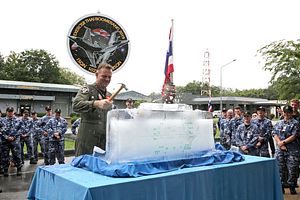Last month, Australia and Thailand held another iteration of their air force exercise. The exercise highlighted the security aspect of the wider relationship between the two countries amid wider domestic and regional developments.
Australia and Thailand have a bilateral relationship that has included a series of defense interactions dating back decades to varying degrees. This includes those that exist between the Royal Thai Air Force (RTAF) and the Royal Australian Air Force (RAAF) as well, both in terms of what they do bilaterally as well as participation in wider minilateral and multilateral engagements such as the Pitch Black exercise which Australia hosts.
The development of this aspect of the defense relationship has continued on over the past year or so amid wider domestic and regional developments, including Australia’s cultivation of defense ties with Southeast Asian states and Thailand’s building of its foreign security alignments as it manages a political transition following an election held this year and as a holder of the annually rotating chairmanship of the Association of Southeast Asian Nations (ASEAN). For instance, in April, the Australian air force chief paid a visit to Thailand where he and his Thai counterpart had the opportunity to discuss the state of this aspect of the wider defense relationship.
Earlier this month, this aspect of the relationship was in the headlines with the holding of another iteration of Exercise Thai Boomerang, the air force exercise that first began in 1992. The exercise, scheduled consecutively alongside Exercise Elang AUSINDO between Australia and Indonesia, kicked off on September 2.
Per a release issued by Australia’s defense department on September 17, the exercise, based at RTAF Base Korat, consisted of a series of engagements involving about 120 Australian personnel. These included an opening ceremony that was co-hosted by Australia’s ambassador to Thailand and the RTAF’s assistant commander in chief, aerial engagements and training designed to enhance the level of interoperability and coordination between the two sides, along with other people-to-people interactions as well that could help boost relations between personnel.
There were also some notable features of this iteration of the exercise. Of particular note was the fact that this was the first time that Australian Super Hornets were included in the exercise. Per the Australian defense department, this came as RAAF Super Hornets from No. 1 Squadron spent a few weeks conducting air combat readiness training against RTAF F-16s from No. 102 and No. 403 squadrons.
To be sure, the air force exercise was just one aspect of a broader defense relationship between Australia and Thailand. Nonetheless, its holding earlier last month, including new features, highlight the importance both sides continue to place in making incremental gains in their defense ties over time amid broader domestic and foreign policy developments.

































